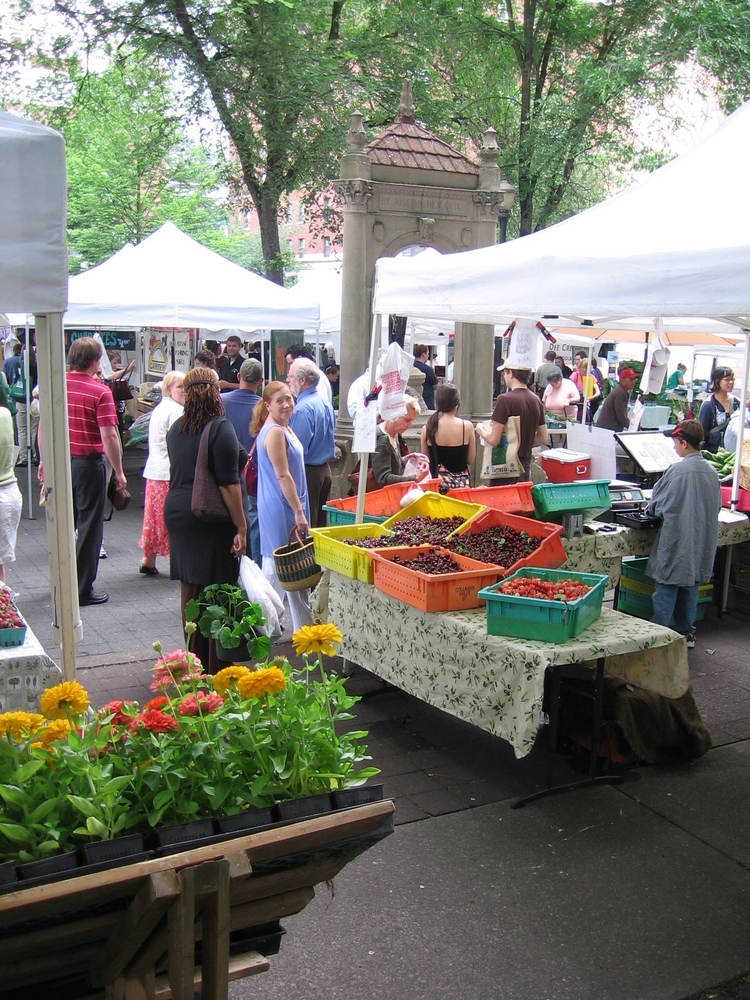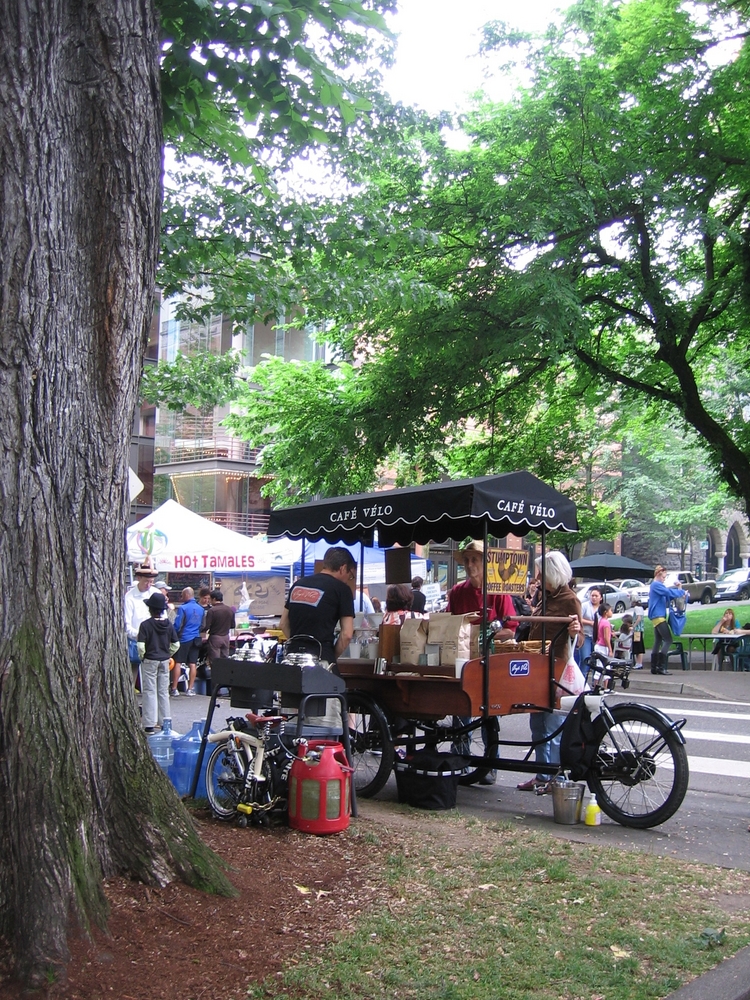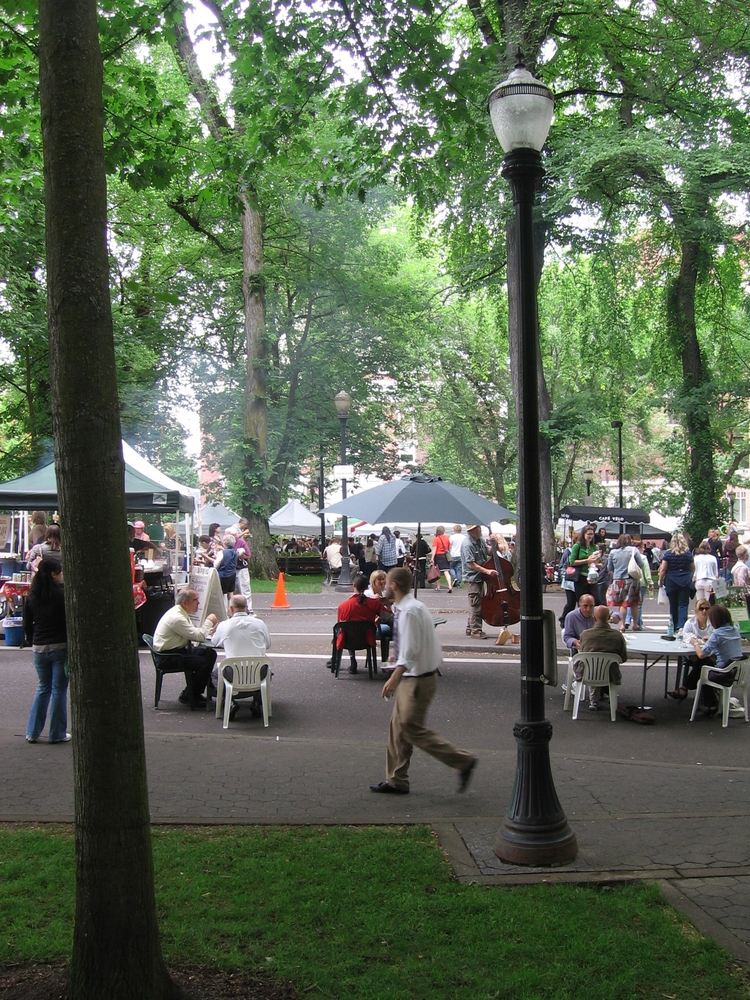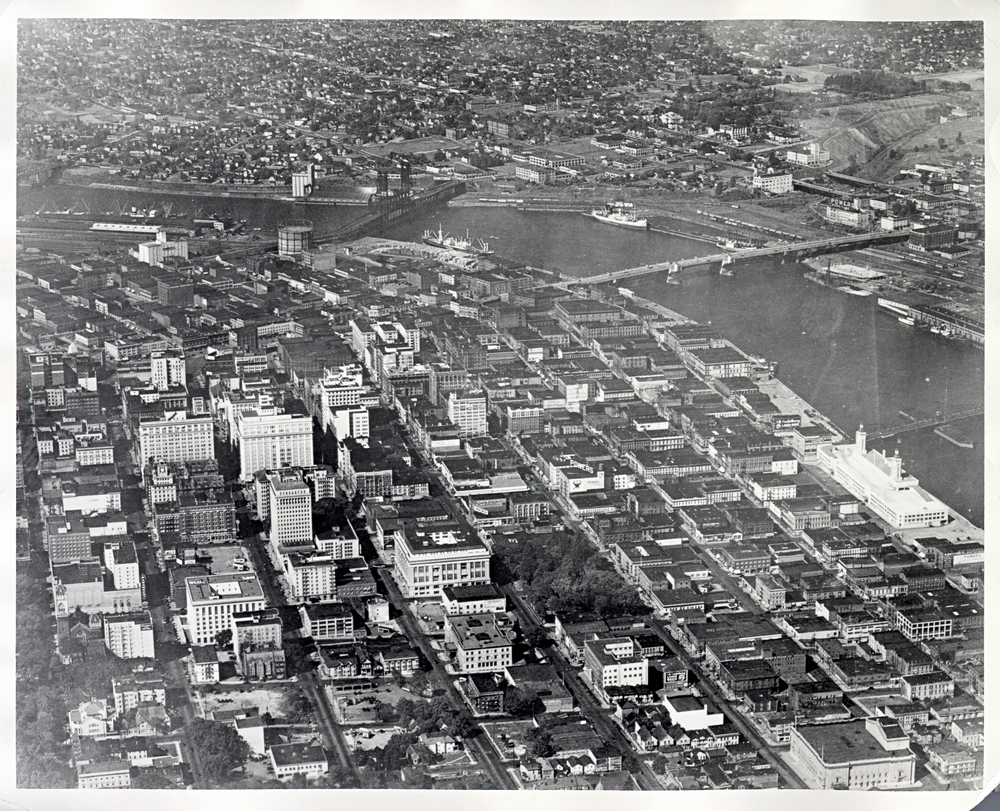Oregon is home to about 120 farmers’ markets, a form of farm-direct marketing that is at once ancient and relatively new. For centuries, farmers have gathered to sell to the public in all parts of the world. Today, farmers’ markets are often open-air gatherings in public places, usually parking lots and streets, where live music and cooking demonstrations create a festive scene that contrasts with the supermarket shopping experience.
What does not always meet the eye is that farmers’ markets are part of a local food movement that has far-reaching implications for land use, resource conservation, personal health, and patterns of consumption. This resurgence in locally based food production has been termed “civic agriculture” in recognition of the connections between local agriculture and communities.
Farmers’ markets also are the most visible part of farm-direct marketing, which includes CSAs (Community Supported Agriculture), farm stands, u-picks, buying clubs, and online sales. Sometimes included in this category are farmers’ sales to restaurants and small grocery stores, distinguishing such institutional purchasers from larger food-distribution networks.
Today’s farmers’ markets have brought together social groups that otherwise likely never would have met. In addition to putting farmers in direct contact with consumers, farmers’ markets represent an interesting mix of hippie culture and “old Oregon” values of entrepreneurial effort based on natural resources. The farmers include those who operate organic farms and use sustainable agricultural methods and those who follow more conventional practices, using fertilizers and pesticides.
In Oregon, the “modern” farmers’ market movement dates back only to the 1970s, with important exceptions reaching back into the nineteenth century. As early as 1873, cities such as Portland, Eugene, and Medford established indoor and outdoor venues known as public markets, farmers’ markets, and municipal markets. The number of markets is thought to have declined significantly after World War II, and it was not until 1998 that the Oregon Department of Agriculture began listing markets in an annual publication, now compiled in cooperation with the Oregon Farmers’ Markets Association.
The best documented of Portland’s outdoor farmers’ markets in the twentieth century was the municipally owned Carroll Public Market, which began in 1912 and eventually occupied six blocks of Yamhill Street curbside. Its sheds were demolished in 1934, but some participants continued as the Farmers’ Cooperative Market through the 1960s.
The Eugene Producers’ Public Market, established in 1915 by the La Pomona Grange with municipal involvement, began in covered sheds but occupied a building for decades before it succumbed to modern economic pressures in 1959. It was not until 1970 that farmers were included in a new Eugene Saturday Market that today features only crafts. A separate farmers’ market was established in 1979 on the site of the older market.
The Salem Public Market, a year-round indoor market established in 1942 because of gas rationing, is unique for its origin and longevity. Salem residents, like those in many small Oregon towns, were accustomed to driving to farms to purchase produce and other agricultural products in bulk for home preservation. With transportation curtailed, the farmers decided to take their produce to the consumers.
By the 1970s, the number of locally owned grocery stores willing or able to buy from local farmers had dwindled, and most Oregonians no longer knew the people who grew their food. Oregon farmers’ markets that started in the 1970s and 1980s were organized largely by farmers looking for a place to sell their produce, because the trend toward national and regional food distribution had separated most small producers from grocery stores and institutional purchasers.
Some markets were created or assisted by anti-poverty agencies seeking to provide low-priced produce in low-income neighborhoods. Organizers envisioned venues where farmers could sell their “extra” produce at near-wholesale prices.
In 1978, the Farmer-to-Consumer Direct Marketing Act directed the Cooperative Extension Service to become involved in farm-direct marketing and to include the organization of farmers’ markets. Two farmers’ markets opened that year in Oregon, at Albany and Newport, perhaps the first open-air farmers’ markets to re-emerge in this period. The Lincoln County Small Farmers’ Association, which operates the Newport market, started with help from the Oregon State University Extension Service.
The number of markets grew slowly over the next ten years. Just as the Oregon Farmers’ Markets Association was forming in 1987, the Oregonian’s FoodDay section listed only twelve markets: Albany, Corvallis, Grants Pass, Gresham, Hillsboro, La Grande, Lane County, Lincoln County, McMinnville, Medford, Rogue River, and Salem. The Beaverton market, now the largest single market in the state, opened the following year. Portland Farmers Market, which now operates six markets, was organized in 1992.
The growth of farmers’ markets accelerated in the 1990s, as community organizers and government officials seized on markets as a way to revitalize faltering urban spaces by creating community gathering places. Over time, the emphasis broadened to include concern for a reasonable return on farmers’ investment. Higher prices led many to accuse farmers’ markets of elitism, which motivated market organizers to increase efforts to get high-quality produce in the hands of moderate and lower income Oregonians. Markets today offer a wide range of assistance programs.
While Oregon markets have experienced significant gains, not all farmers’ markets succeed. More than thirty markets closed between 1998 and 2005, almost half of the number that opened.
-
Farmer's Market in Portland's South Park Blocks, June 2009..
Photo by James V. Hillegas for the Oregon Encyclopedia
-
Farmer's Market in Portland's South Park Blocks, June 2009.
Photo by James V. Hillegas for the Oregon Encyclopedia
-
Farmer's Market in Portland's South Park Blocks, June 2009.
Photo by James V. Hillegas-Elting for the Oregon Encyclopedia
Related Entries
Related Historical Records
Map This on the Oregon History WayFinder
The Oregon History Wayfinder is an interactive map that identifies significant places, people, and events in Oregon history.
Further Reading
Bettis, Stan, Market Days: an informal history of the Eugene Producers’ Public Market. Eugene, Oreg.: La Pomona Grange Fraternal Society, 1969.
Oregon Farmers' Markets Association. http://www.oregonfarmersmarkets.org/.
Stephenson, Garry. Farmers’ Markets: Success, Failure and Management Ecology. Amherst, New York: Cambria Press, 2008.




